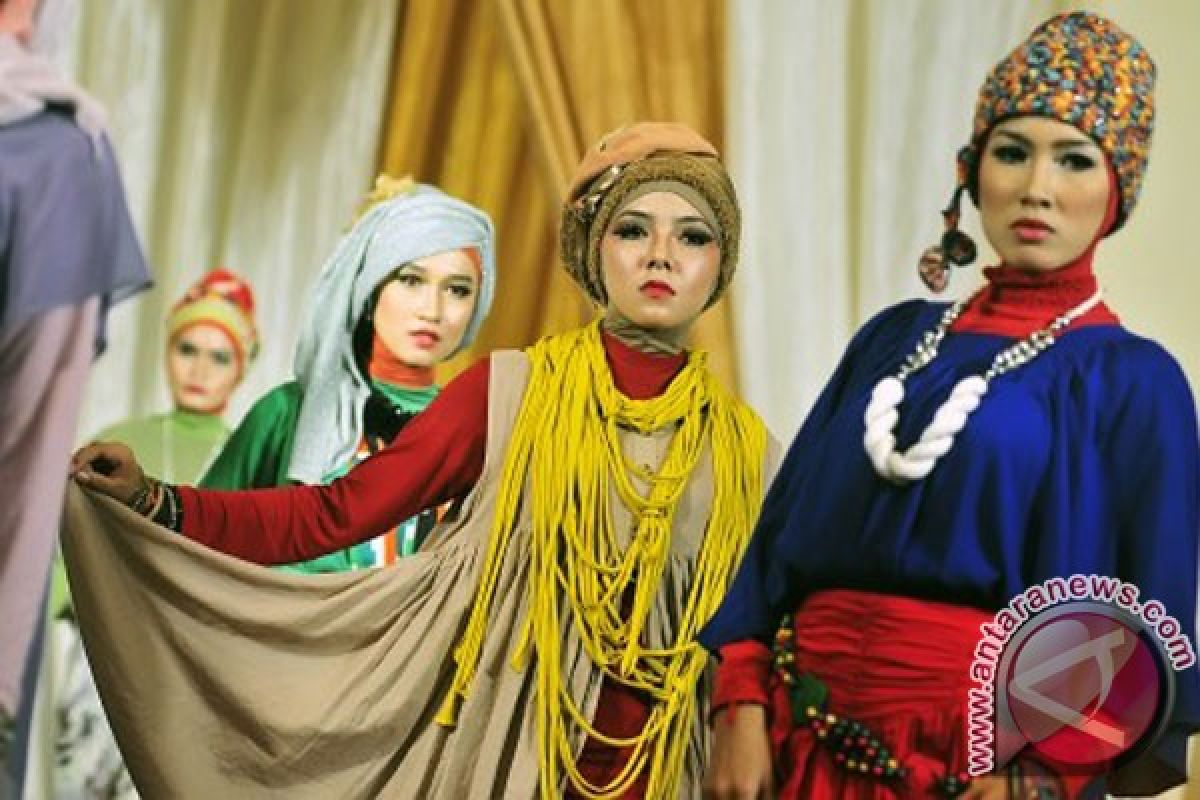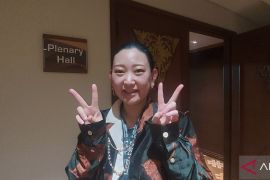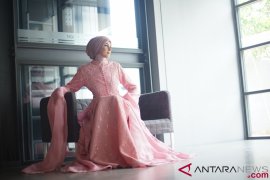The hijabs are all cute and I can`t resist buying them. Some of the hijabs I've bought I have not yet even worn."Jakarta (ANTARA News) - A woman walks out of a fashion store in a mall in Jakarta. She holds a large paper bag, possibly containing clothes or accessories she bought at the store.
She also wears a floral legging, combined with a loose, long white shirt that covers her bottom. But what captures attention is the bright orange headscarf that is shaped like a wave.
She represents thousands of Indonesian women who are now embracing the life of wearing trendy headscarves.
Twenty years ago, Indonesian women only knew square-shaped headscarves, in either plain black or white. The way those women wore their headscarves was also simple; they wrapped the fabric around their heads and used a safety pin to keep them intact. In the past, wearing headscarves was often associated with an unfashionable life.
Now, the headscarf, or hijab, has become a trend among Muslim women in Indonesia. With more fashionable styles, colors and shapes, wearing hijabs among Indonesian women is not only a religious commitment, but also a fashion statement.
For instance, on Youtube viewers will find thousands of Indonesian women offering tutorials on how to fashionably wear hijabs.
Fani, a 29 years old employee of an insurance company, spends Rp300,000 (around US$35) per month to purchase hijabs and accessories.
According to Fani, who lives in Bandung city, West Java province, every month there are new, trendy hijabs being displayed in stores. Hence, she often spends one day a month to go hunting for fashionable hijabs in malls or shopping centers in her town.
"The hijabs are all cute and I cant resist buying them. Some of the hijabs I've bought I have not yet even worn," she said.
Now there are various kinds of hijab styles, such as long shawl hijabs, the square-shaped hijabs and instant hijabs, where the fabric has already been tailored so the users can simply put the hijab on their head without pins. There are also various patterns of hijabs, ranging from colorful tribal to polkadot.
The increasing number of Indonesian women wearing trendy hijabs has resulted in business among hijab retailers to mushroom. Rabbani, a well known hijab retail company in Indonesia, is reportedly earning billions of Rupiah per month from the sales of hijabs.
This company mainly manufactures the so-called instant hijab, where the fabric has been tailored so that women can wear them as hijabs without having to use pins or other ornaments to keep the fabric on their heads. Apart from selling instant hijabs, Rabbani, which has some 141 branch stores across Indonesia, also manufactures Muslim clothing.
The hijab is not only sold in retail stores, but also online and through social media, such as facebook, twitter and instagram. Also, websites such as grosirbajumuslimterbaru.com, or instagram accounts such as @diindrihijab or @hijabkami, are selling varieties of hijabs and accessories for women with expectations of profits from tens of million to billions of Rupiah.
Apart from profits for manufacturers, the hijab trend also brings out new celebrities who gained fame due to their style of wearing hijabs.
Personalities such as Dian Pelangi, Hanna Faridl and Fifi Alvianto are well-known for their stylish and chic fashion while wearing hijabs.
Hanna and Fifi, for example, write on the blog hijab-scarf.com to share their stories and tutorials about how they style their hijab and choose a dress to match.
With 4 million people viewing hijab-scarf.com blog, Hanna and Fifi are not only sharing the latest fashion trend, but also fashion tips and a little bit about their personal life stories.
"In the end, the importance of wearing hijabs is that it is not only a symbol of modesty, its about being able to put yourself in a positive state of mind and make the right decisions. Modesty comes from within, and even a woman wearing a hijab can have a lack of it," Fifi wrote on her blog.
(Edited by INE/KR-BSR/H-YH)
Reporter: Amie Fenia Arimbi
Editor: Priyambodo RH
Copyright © ANTARA 2013











